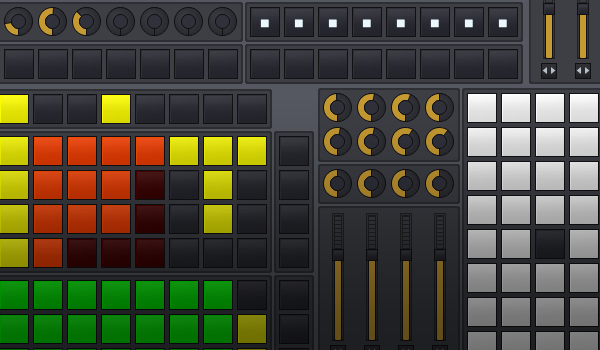Release Notes for Renoise 2.6.0
Customize Renoise with Lua Scripting
Scripting opens the doors for developers to extend Renoise. With a few lines of code, you can now add new features or tools that you always wanted Renoise to have, but never dared to ask for.
Lua is a light-weight programming language, which together with the Renoise API allows you to build extensions quickly and easily.
Download Tools
For those of you who are not developers, you can still benefit from tools and extensions created by others, available at http://tools.renoise.com.
Create Tools
To get your hands dirty with some coding, the URL you need is http://scripting.renoise.com.
Examples
Some examples of what you could create with scripting inside Renoise:
- New context menu entries and keyboard shortcuts (think "My Improved Pattern Jump", "My Bypass all DSP Devices in Track", "My Generate Chip Sound Sample" commands and so on). A similar concept to the extensions in Mozilla's Firefox.
- Custom graphical user interface elements with the look and feel of Renoise itself. Perfectly integrate your tools with Renoise and make them easy to use for others too.
- Manipulate the Renoise main window or the song (patterns, tracks, instruments, anything that makes up a song). Generate, filter, or process song data in any way you can think of, e.g. for algorithmic composition, instrument creation, automation etc. The sky is the limit.
- Help us create official features by prototyping your ideas, finetune them with the aid of the community and hopefully see them integrated into the core feature set of a future Renoise release.
- Fully optional (no need to use it, when you don't need it)
- Ability to mute parts of your song, without the need to create new patterns, also useful when playing livesets to develop patterns in real time (create full arrangements or "drafts" from a single pattern with just a few clicks)
- Nibbles. :)
Better MIDI Controller Handling through Scripting
The new scripting feature brings a huge improvement in the configuration of hardware controllers. Anyone can now create mapping templates for any imaginable controller, and publish them at http://tools.renoise.com.
You no longer have to poke around with manually mapping anything in Renoise unless you really want to. True plug and play.
Communication with controllers is now also two-way so you can have those automated faders, LED displays and flashing lights always update in sync with what's happening in Renoise.
And if you're not content with using templates made by others, you have through scripting unparalleled flexibility and control when it comes to getting a controller to behave exactly the way you want it to:
- Make your Launchpad into a Mackie Control, or maybe a step sequencer.
- Get the faders on the Behringer BCF2000 moving to the beat.
- Create a mapping exactly the way you need it for live performance.
- Automap any controller.
To make this easier, Renoise offers a bundled tool called Duplex, which comes shipped with mapping templates for a bunch of common MIDI controllers. Duplex also offers virtual UIs for configuring the controllers it supports. This way you can virtually test out such controllers without having to own them!
You don't have to use Duplex for creating your own controller mappings, but it offers a lot of tools that makes this easier.
Duplex already has support for the following and there are lots more to come:
- Novation Launchpad
- Novation Remote SL
- Novation Nocturn
- Behringer BCF2000
- Behringer BCR2000
- Ohm 64
Sample Autoseek
Samples have a new setting, "Autoseek", which will, when enabled, make them behave like a traditional audio channel. You can start playing back the song at any position, and the sample will automatically seek to the current position in the song without having to be triggered via a Note On command. This works regardless of how far in the past the sample was triggered. Highly recommended for vocals, background ambiences and other recorded audio.
Check this for a rundown:
And more...
Open Sound Control (OSC) Server Support
In addition to enhanced MIDI mappings, Renoise can now also be controlled remotely via the OSC protocol. This allows you, even across a network, to send Renoise commands such as "/renoise/transport/start". It is also possible to send any piece of Lua code as an OSC command for infinite control customization possibilities.
Linux & Mac OSX Performance Tweaks
Around 5% speed improvement for 32-bit architectures, 10% or more for 64-bit on Linux.
DSSI Support on Linux
DSSI is a virtual instrument plugin standard for Linux. A bit like an open-source version of VST. Renoise can now host also DSSI plugins.
64-bit Linux version
Renoise is now available for both 32-bit and 64-bit flavours of Linux.
Better support for hardware-based plugins
Plugins that interface with hardware such as the Access Virus and DSP cards now run with greater compatibility and performance in Renoise.





